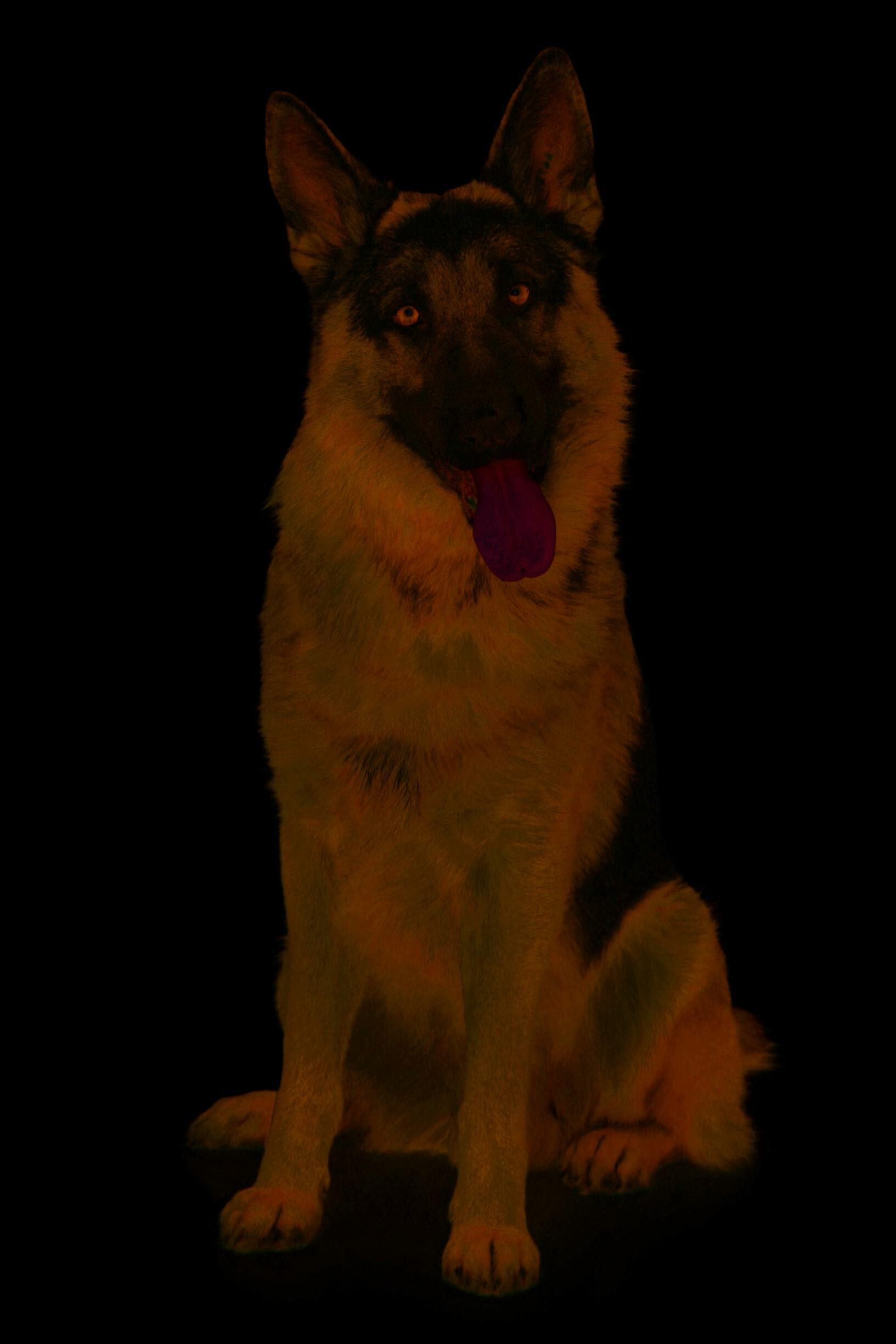

How exciting – you have chosen a new addition to your family! When bringing any new pet into your home being prepared is so important.
The first few days in a new home can be very difficult for a new dog. They don't know you, your home or your routine and can therefore get quite stressed. It can take some dogs months before they settle, whilst others may just take minutes as if they’d belonged with you all their life. Adopting a rescue dog is very rewarding but some people over compensate when they first take their dog home as they feel sorry for them.
Your dog’s previous home may be totally different from their new surroundings, and possibly one where the relationship between dog and owner has failed.
It is best to start as you mean to go on. For example keep him in the area of the house you want him to have access to and to feed him what you want him to eat from day one.
Once habits form, they can be hard to break. Allowing your dog extra privileges when he first comes home, and then revoking them at a later date, is confusing for them. You can avoid problems with your new dog and help him or her adapt more easily by following these simple guidelines: We



3 2 1 2
will cover: What you will need for your new dog How to set up your home ready for your new dog What to do when you bring your new dog home
Dog food, bowls and water bowl
Check what your new dog eats and purchase the same food, as you will need to continue the same diet for the first few weeks at least. This will prevent any stomach upsets.
Plastic bowls will probably end up as chew toys, and the tooth marks could become a haven for bacteria and damage teeth and gums. A heavy bowl will also be harder for your dog (and you) to knock over by accident.
A cosy bed
It’s important to make sure you choose the right size bed for your new dog. It should be large enough for them to lie down comfortably and stretch out their legs if they want to.
After that, you can decide what food you’d like to feed them.
If you decide to change the dogs diet, you will need to change it gradually over 5 7 days by mixing the new food in with the old.
It is important to feed a complete and balanced dog food appropriate for the dogs age and life style.
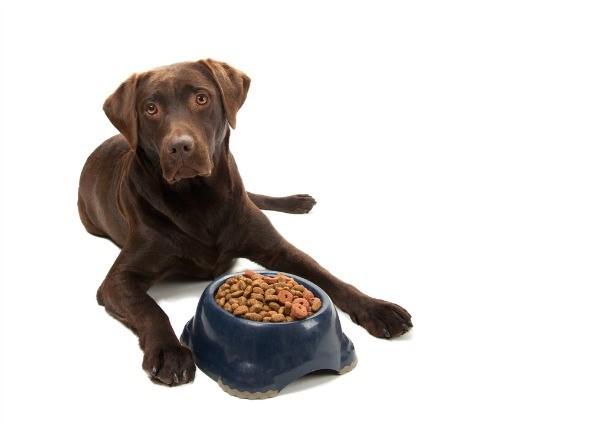
Choose heavy bottomed ceramic or stainless steel food and water bowls.
Dog beds come in many different shapes and sizes. Round or oval beds with a side are great for when your dogs wants to curl up, whereas mattress beds can be good for lying flat. Each dog will have their preferences, but it's always best to give them a couple of options in different locationsthat way you can be sure they’ll always be comfortable and don’t put continuous pressure on any joints.
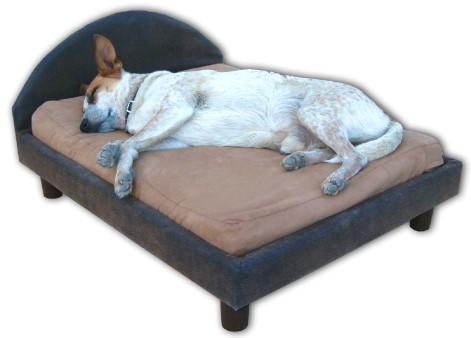
3
1.Here are a few things that you will need to purchase for your new dog
Collar, with ID tag, lead and harness/headcollar if required
Collars and leads come in a variety of materials. Nylon or soft leather adjustable collars are recommended, as they’ll grow with your puppy or dog.
Adjust the buckle so that you can comfortably put two fingers between the collar and your puppy or dog’s neck. Check the fit regularly.
By law, all dogs must be microchipped and wear a tag on their collar showing their owner’s name and address and telephone number.
If you have a very small dog, like a small terrier or a toy breed, it is a good idea to use a harness to walk them it protects their delicate neck and throat. Remember to make sure your puppy or dog still wears an ID tag.
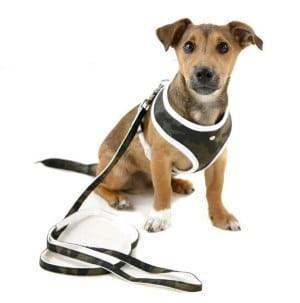
Grooming equipment such as doggy shampoo, nail clippers, brushes and combs

For your puppy or dog, grooming isn’t just about untangling their coat and making them look smart, it is a bonding experience that reminds them of being back with their mother. You will need a comb or a brush and plan daily grooming sessions. Different coats will need different brushes.
You will also need to clip your dog’s nails and give them a bath from time to time – so it is worth picking up a pair of nail clippers and some dogfriendly shampoo too.
Baby gates
Stairs, balconies and ponds should all be out of bounds for an inquisitive puppy or dog and a strategically placed baby stair gate will do the job when you’re not there to supervise.
A gate can also help you protect your furniture and possessions from your puppy or dog’s unstoppable chewing instinct.
4
They are also really useful for introducing a new pet to an existing pet safely as well.
Variety of toys
There’s an amazing selection of dog toys out there. You’ll find safe rings, balls, slings, tugs and fabric stuffed soft toys.
Something to chew on
Dog crate
Dog crates are a great way to create a safe den for your new dog as well as having somewhere to put your dog securely for a few hours if needed. You can also use a crate to transport your dog in your vehicle safely.
A dog crate needs to be big enough for your puppy or dog to stand up and turn around in comfortably.

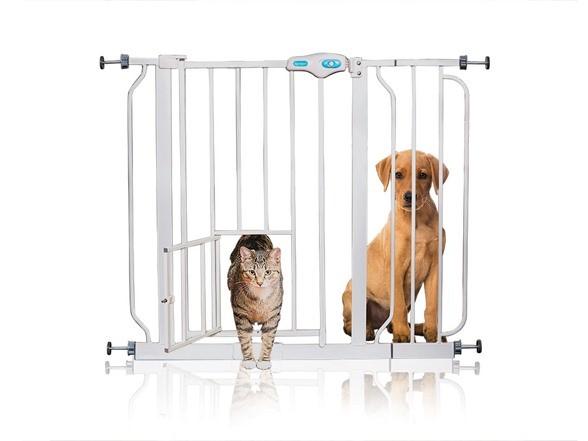
Dogs hate to go to the toilet in their own bed, so a crate is a great toilet training aid in those first few weeks when your puppy or dog is adjusting to their new routine.
Dogs love chewing and a teething puppy or dog will chew anything they can get their jaws around. So if you want to protect your socks, your shoes and your sofa, buy a selection of chew toys, such as Kongs for your dog to test their teeth on instead.
Just make sure they’re non toxic, durable and not too tough for puppy or dog teeth. And never leave your puppy or dog alone with anything that could choke them or splinter in their mouth, such as bones or raw hide.

5
Dog treats
Healthy dog treats come in a wide variety of sizes, shapes, and flavours, but not all dog treats are equally nutritional. However, some snacks are better than others.

Pet Insurance
If you’re not adopting a dog from a rescue centre that provides four weeks free insurance like Gables does, then you will need to put an insurance plan in place ready for the first day you bring your dog home.
During training dogs are rewarded with treats, toys or praise for good behaviour. For this reason, it is important that you provide healthy treats to prevent weight gain.
Dog poop bags

You will need to stock up on poop bags so you can pick up after your dog. You can be given an on-the-spot fine by the Council if you don’t. The amount varies depending on where you live. It is often £50 and can be as much as £80!
There are many different providers and different levels of cover so do your research. The cheapest isn't always the best option, as you may not be covered for important items or for very long.
Pet safe household cleaning products - for any accidents
You will need to make sure you have some cleaning products ready that are safe for dogs, to clean up any accidents they may have. Also consider what you will wash floors with, as your dog will lick his feet when washing himself.

6
2. Getting your home ready for your new dog
If you have not had a dog or puppy in the house before, or it is a long time since you last had one, then perhaps a quick safety audit of the house to highlight areas of danger is a good idea.
Keep in mind some things that may be safe for humans could be hazardous to dogs like chocolate and grapes!
Here are a few things to look out for.
Precious breakable items such as ornaments
Look at your house with a curious dog’s eye view and move any breakable or valuable items out of harms way.
Cleaners, bleaches disinfectants, laundry capsules and concentrated liquids
Many household cleaners can be used safely around pets. However, the key to safe use lies in reading and following product directions for proper use and storage. For instance, if the label states “keep pets and children away from area until dry”, follow those directions to prevent possible health risks.
Antifreeze
You might already know that antifreeze is extremely poisonous to animals, and you might be very vigilant about making sure that your car radiator doesn’t leak. But did you know that antifreeze can even be present in the blue product you use to keep your toilet bowl clean?
If you’re using a “by the flush” bowl cleaner, make sure that the label tells you it is safe for pets.
Insecticides/Rodenticides
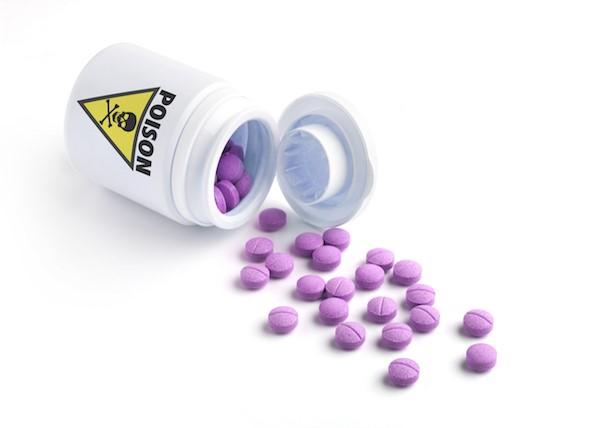
As with household cleaners, read and follow label instructions before using any type of pesticide in your pet’s environment.
If a pet ingests rat or mouse poison, it can be potentially serious or even life threatening.
7
Medications
Medications that treat human medical conditions can make pets very sick. Never give your pet any medication, including over the counter medications, unless directed by your vet.
As a rule, all medicines should be tightly closed and stored securely and away from pets.
Certain human foods are poisonous to dogs
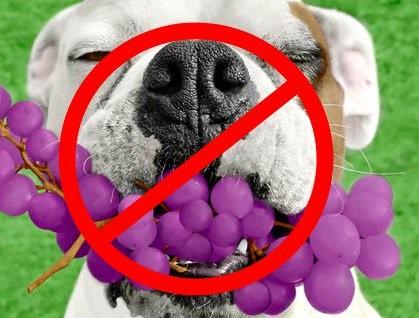
Wires
Dogs like to chew so make sure you tidy away any loose or trailing cables that could be a hazard to a dog, especially puppies.
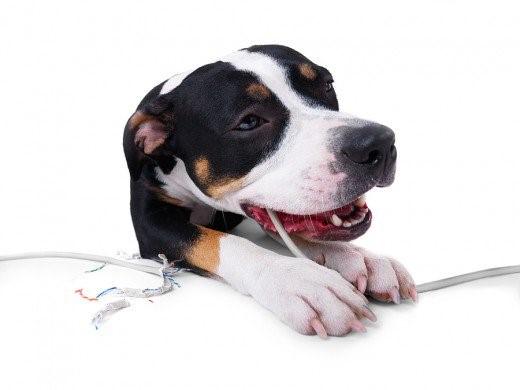
Chocolate, coffee and caffeine. Macadamia nuts. Grapes, raisins and currants.
Onion, garlic and chives. Alcohol.
There are more but these are the most common.
Make sure these are kept out of reach at all times.
Outside areas
Have a look outside and remove any dangerous items such as broken glass. Clear away any rubbish that may injure an inquisitive puppy or dog.
Remember that dogs like to chew so if you have any valuable items such as children’s play equipment, plastic paddling pools or chairs make sure you are able to restrict a dogs access to them.
If you have a pond then check that if a dog fell into it, there is a way they can get themselves out with steps or strategically placed rocks/ boulders.
8
- it is time to set up a safe den area for your new dog.
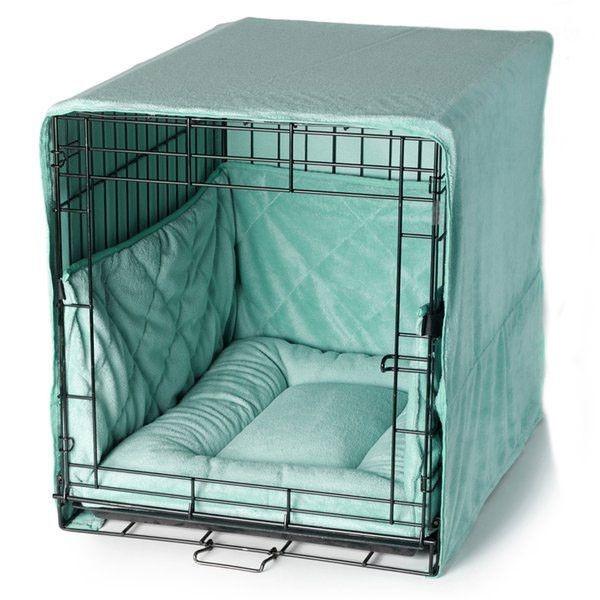
Prepare a sleeping area where your new arrival can feel safe and secure, equipped with a dog bed, blanket or cushion, toys as well as water and food bowl.
Cover their bed or a crate (with the door left open) with an old duvet or blanket to help soundproof it from household noise.
This provides a 'time out' place for your dog to escape to.
Any room with a hard floor that is easy to clean up possible accidents is ideal.
Use a plug-in DAP (Dog Appeasing Pheromone) diffuser such as Adaptil, which will give a sense of familiarity. These imitate the chemical a mother dog releases when caring for her puppies.
We sell these at Gables.

Now you have checked your home and garden
9
3. Bringing your new dog home
To avoid added stress, bring your dog home when the house is going to be quiet.
Travelling Home
Make sure your dog is secure in your vehicle. If your dog is going to be loose in your vehicle, it is strongly advised to get a car safety harness like this one.

You can also travel with your dog in the boot with a dog guard or crate but you must remove the parcel shelf by law.
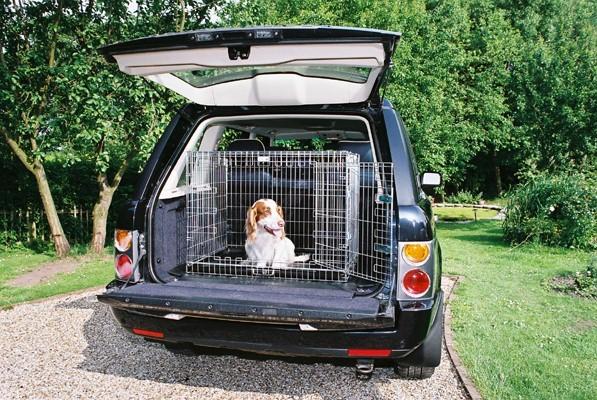
We sell them at Gables and we can fit them for you.
On arrival at your home
Be careful when getting your new dog out of the car, or opening the front door, as he may bolt. Take your dog straight into your garden and encourage him to sniff around.
He should be ready to go to the toilet and when he does make a big fuss of him and give him a treat or other reward.
10
By congratulating him, you are teaching him that this is where he goes to the toilet.
Then take him inside and let him have a good sniff around the inside of the house, so he can become familiar with his new surroundings.
Give the dog time to explore the house but do not fuss over him too much.

Anything he does that you don’t want him to do (e.g. jump on the sofa) you will need to correct straight away.
Show him his bed/den area. You can encourage him to go in his bed but don’t force him as he is probably more interested in having a good nose around.
Never insist your dog comes out of their ‘den’, let them build up confidence to explore when they are ready.
Watch out for signs of him wanting to go outside. Actions such as pacing, circling, or standing at the door to the garden are your dogs way of telling you he wants to go to the toilet again.

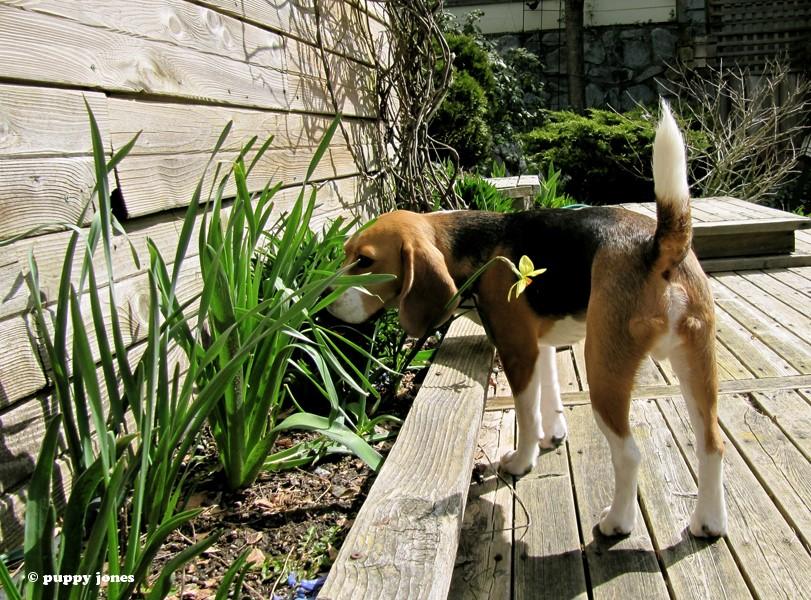
11
A gentle touch
Your dog may be wary of how and when he is touched, so go easy on the patting and stroking until you both learn what suits.
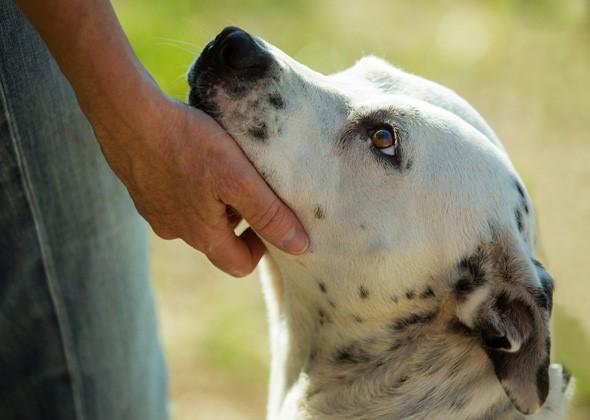
Stick to neutral areas, such as the chest, under the chin and just between the front legs, so they have the option to move away if they are not happy, rather than growling.
Always let your new dog approach people rather than allowing people to approach him; this lets him meet people at his own pace.
If you have children, hold one last meeting to lay down the rules: Don’t overwhelm the dog on the first day, and don’t fight over him or be noisy, which could scare him.
You always need to supervise children near your dog, especially one whose history may be unknown.
Meeting the rest of the family
Once your dog seems comfortable with you, introduce him to other family members one by one. Children are likely to be excited about the new arrival, but try and keep them calm.
Puppies are particularly delicate and, just like babies, need lots of sleep. Make sure your puppy is handled carefully and gets plenty of time to rest.
Growing up with a pet can be an extremely rewarding experience for any youngster.
We all remember our first pet and teaching your children to respect, love and help care for a dog will help them to become responsible and caring adults.
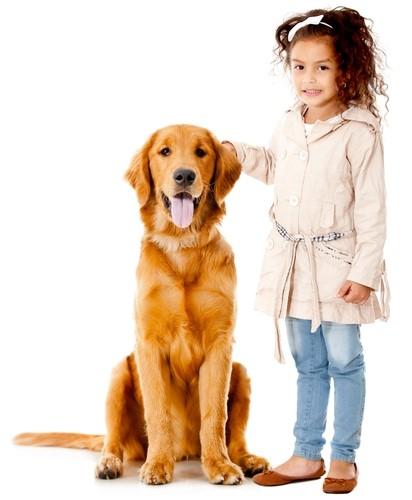
12
They will love to get involved with taking care of your dog so let them help with feeding, grooming and playing and you will have happy children and a happy dog!
If you have other pets please read our leaflet on how to introduce dogs and cats before proceeding any further.
The first night
Your newly adopted dog may not eat much or at all at first. It’s best to give him the same food he had in his previous home or rescue centre. Keeping some things familiar will make him feel more secure.
Settle the dog down just before you go to bed yourself any activity outside the room once the dog is settled may cause him to try and get your attention.
Puppies may be used to sleeping amongst other puppies, so make lumps under blankets (old toys or rolled up t shirts) that he can snuggle up against. A ticking clock, radio at low volume or hot water bottle under the blanket can help a puppy feel more secure and less lonely.
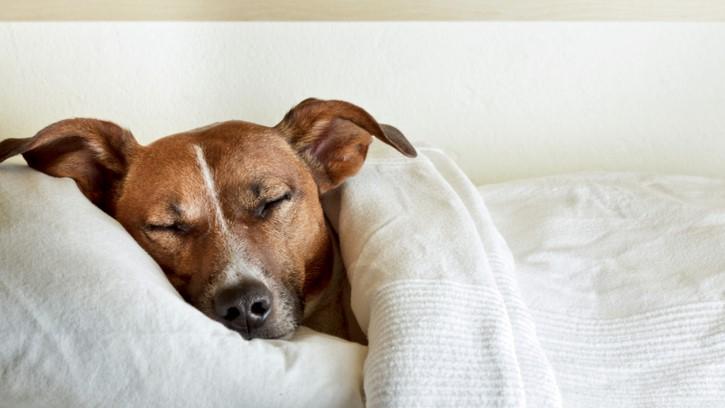
Don’t make a major fuss when you leave the dog. If he scratches at the door, or whines this should be ignored – the behaviour will only continue if you respond to it.
In the morning, go into the room where the dog is, try not to make any noise, don’t make a big fuss but rather give him a calm welcome and take him outside so he can go to the toilet. Reward him when he goes outside.
Keep the first week very low key you don’t want to frighten or overwhelm him.
Start as you mean to go on with gentle, consistent training and set ground rules that should be followed by all of the family.
Your new dog will have to be introduced to your extended family, and friends and of course other animals, as having a social life is just as important to your dog as it is to you.
13
Introducing your new dog to friends
and family
Don’t invite people around to meet your dog, or take him to busy, potentially scary places for at least a week. Give him plenty of time to bond with you, get to know his new home, feel safe and secure before expecting him to cope with too much!
Meeting new people from relations to friends and neighbours needs sensitive handling, and should preferably occur in an open area like the garden so your dog doesn’t feel trapped.
Make sure people don’t stand or lean over to see the dog as this could seem threatening, especially if it’s done over a fence or gate as this can spark territorial behaviour such as growling.
Ask your visitors to squat down, with one foot flat on the ground, to be level with the dog but not staring him in the eye.
Give the dog a small treat for good behaviour even better give your visitor the treat to give to your dog.
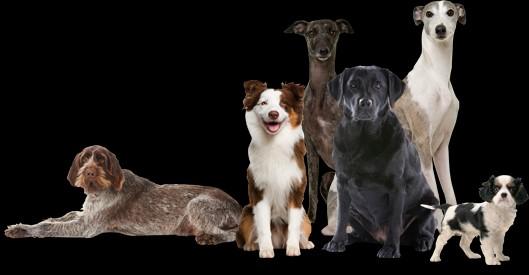
Out and about
Start on an ordinary lead so the dog walks close to you and you can stay in control, but gradually give them a longer lead, rewarding good behaviour with treats. Give praise and positive feedback before you hit any tricky situations so your dog looks to you for guidance.
Remember do not let him off the lead for the first few weeks until he has bonded with you and you have taught him a good solid recall.
14
New Dog Checklist
Register your new dog with a local vet.
Get pet insurance - it will cover any unexpected veterinary bills if they occur.
Get identification for your dog microchipping is required by law as well as a collar and ID tag. Microchipping can be done at a vets or Gables. If you are adopting a dog from Gables it will already be microchipped so you will just need to remember to keep your details up to date.
Vaccinate your dog your vet can advise on the vaccinations your dog will need. If you have a dog from Gables he will already be vaccinated or you may be given a log number to have the second part of the vaccination done at our vets. You will need to get the vaccination boosted annually.
Regularly treat your dog for fleas and worms - the most effective treatments come from your vet and can come in pill, powder, spray or spot on forms.
Get your new dog neutered - if you are adopting a dog from Gables this will already be done.
For further information on dog care please see our ‘caring for your dog’ leaflet.
15
Good luck with your new arrival and remember that we are here to help so please contact us if you experience any problems or have any concerns.

Reception & Shop Opening Hours Monday 9.00am 4.00pm Tuesday 9.00am - 4.00pm Wednesday 9.00am - 4.00pm Thursday 9.00am 4.00pm Friday 9.00am 4.00pm Saturday 9.00am - 3.30pm Sunday 9.00am 3.30pm Bank Holidays 9.00am - 3.30pm 204 Merafield Road Plymouth Devon PL7 1UQ Telephone: 01752 331602 Email: info@gables.org.uk Website: www.gables.org.uk






























